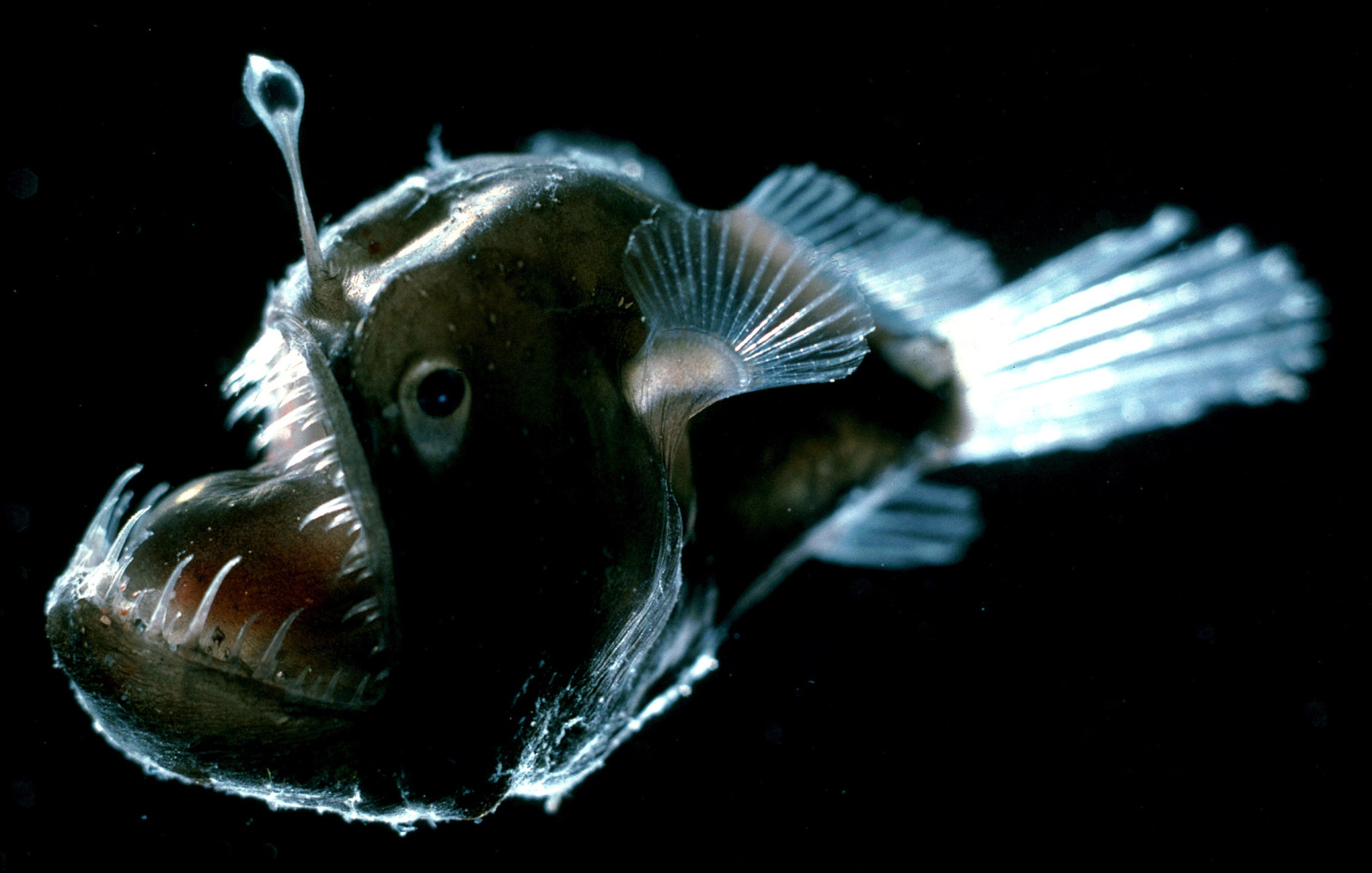Deep sea angler fish - queens of the glowing depths
With parasitic males and glowing lures to catch their dinner, female angler fish are the undisputed queens of the deep.

Sarah - The next bioluminescent critters I want to talk about are the anglerfish, particularly the family Ceratiidae, also known as the Sea Devils, which is a pretty good name.
These are those ugly deep sea fish with a long manoeuvrable lure on their heads that glows at the end. The lure is made up of a spine that has migrated through evolution from being attached to the front of the dorsal fin, to above the head. It's completely mobile and can be waved around in all directions, and it's used to lure prey, but may also be used to attract a mate. The very end of the lure is full of bioluminescent bacteria called Photobacteria.
So these fish don't bioluminesce in the same way as the crystal jellies, which produce their own light - they rely on a symbiotic relationship with these bacteria. The bacteria enter the bulbous end of the lure through pores and once inside can gain nutrients and protection from their host, while the fish gains the ability to use the bacteria's bioluminescence.
Now while the lure is used, just like a fishing lure - hence the name anglerfish - to lure prey, there is suggestion that they might also attract mates. Only the females have these lures - the sexual dimorphism, or the difference between males and females of these species of fish is extraordinary - females are reasonably large, ranging from a few centimetres in the smallest species, to over a meter in the case of Kroyer's Deep Sea Anglerfish. But the males are tiny - in Kroyer's Anglerfish, while the females can be over a meter long, males are generally around 14 centimetres!
And in smaller species the males are so tiny that originally researchers thought they were some kind of parasite living on the female specimens they caught. So possibly, along with their acute olfactory sense, the males can find the females by their lures. They then attach to the female permanently, actually FUSING with her blood stream and gradually atrophying until they are simply a pair of gonads that release sperm into the female in response to hormonal cues in her blood.
This bizarre method of reproduction is a good strategy if individuals of a species are scarce and widely spread out - having the male attached to her body means the female has a ready supply of sperm whenever she releases an egg.










Comments
Add a comment